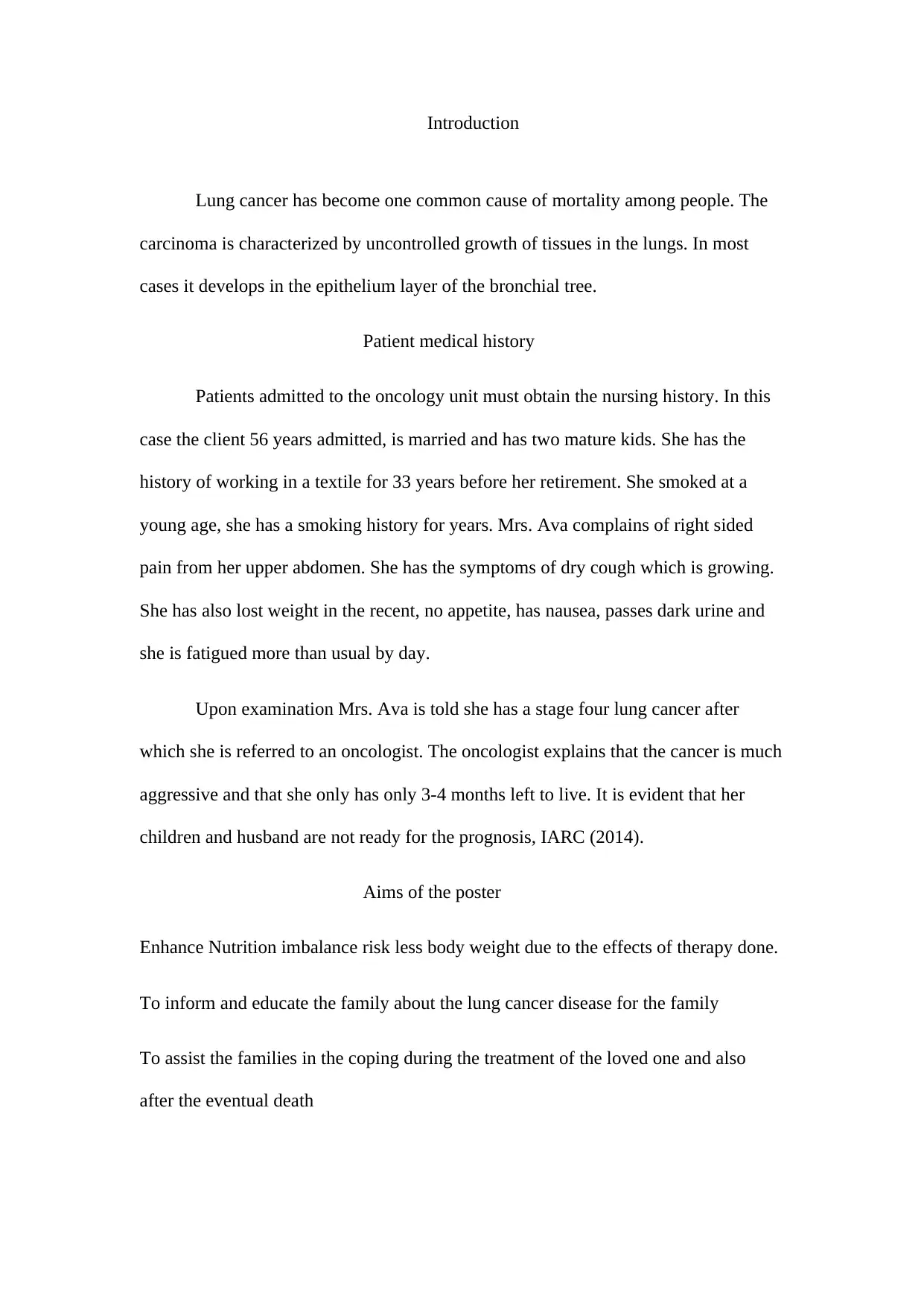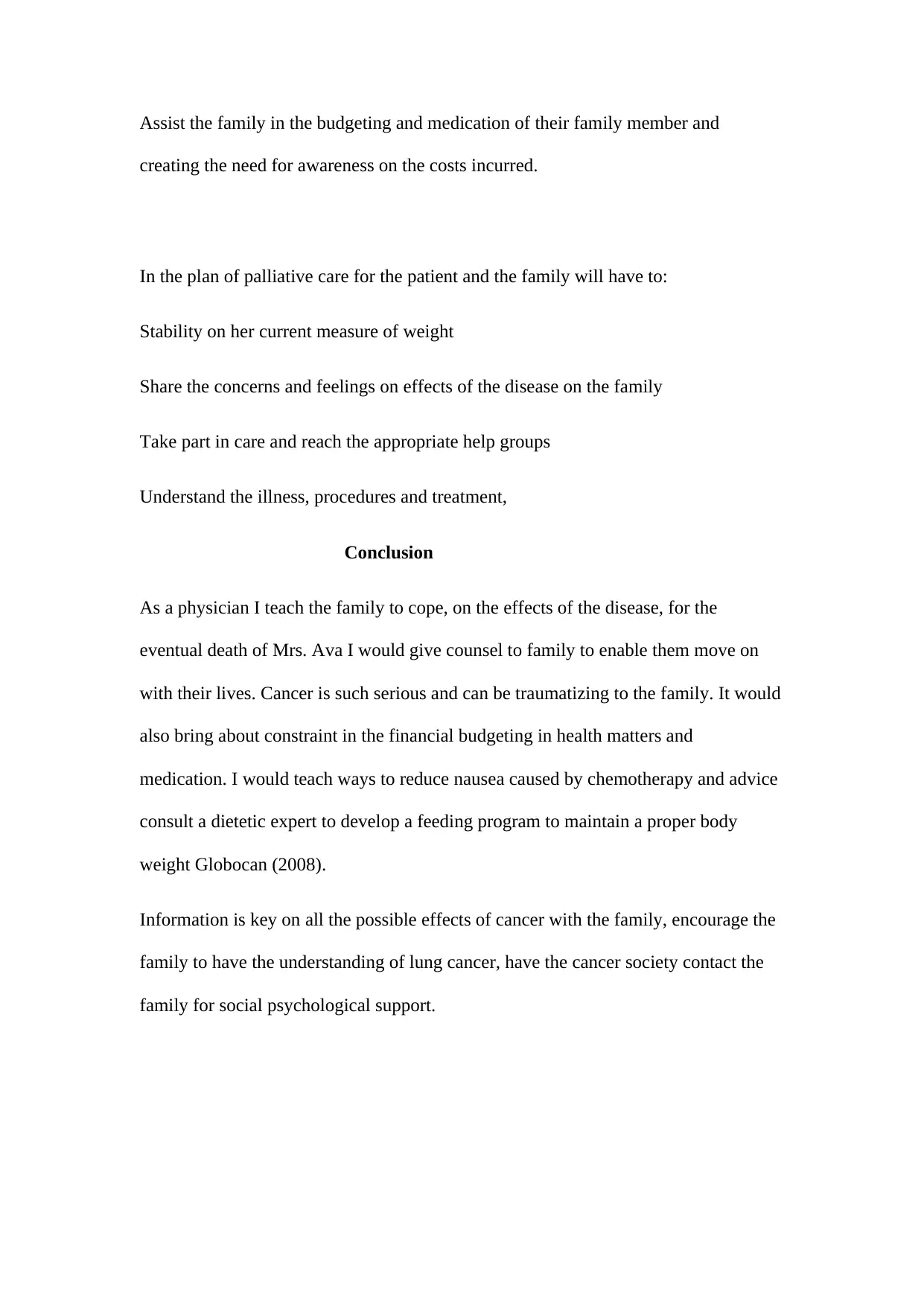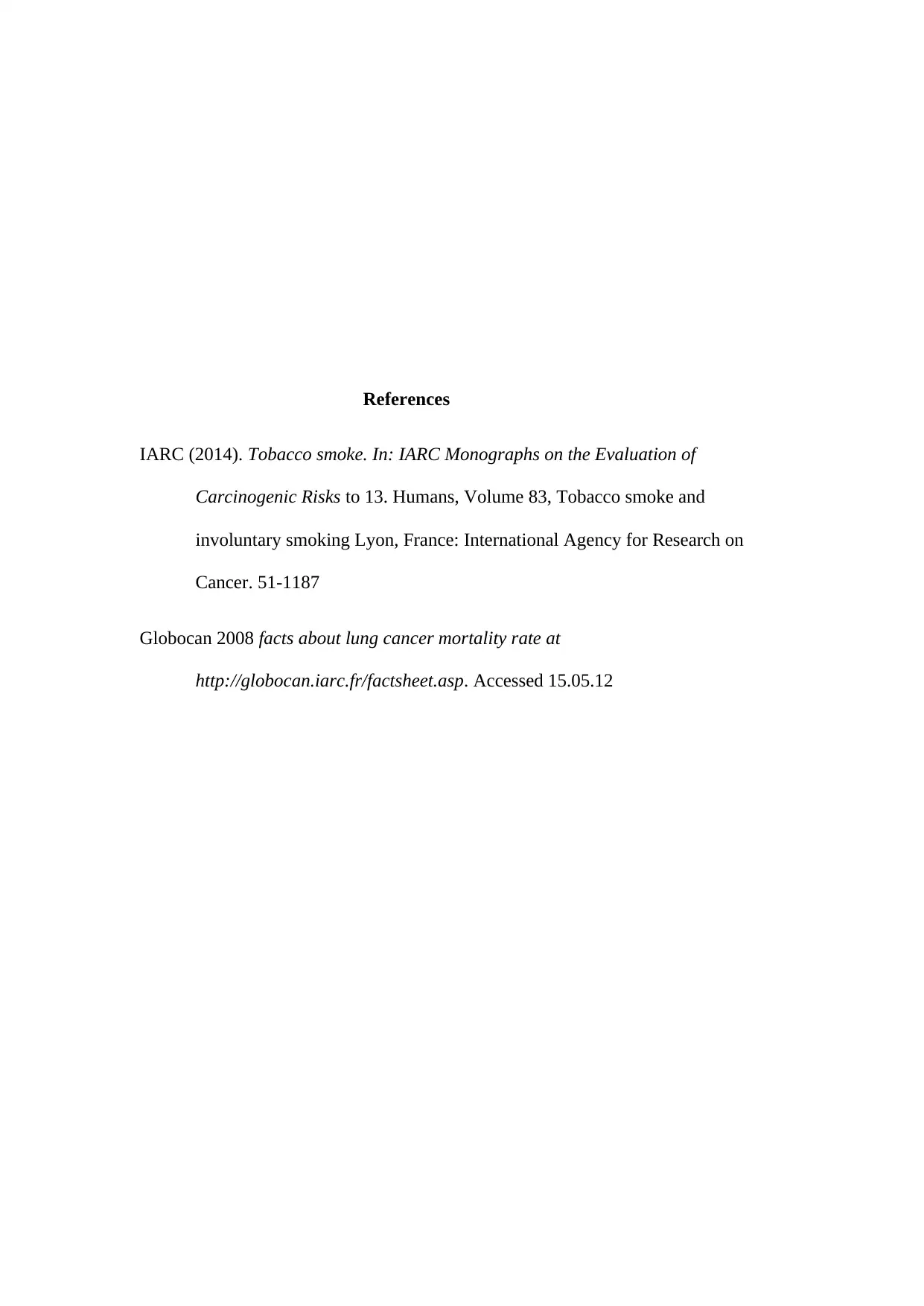Lung Cancer: Patient Case Study, Treatment, and Family Support
VerifiedAdded on 2020/03/23
|3
|543
|35
Report
AI Summary
This report presents a case study of a 56-year-old woman diagnosed with stage four lung cancer. The report details her medical history, symptoms, and the oncologist's prognosis, highlighting the emotional impact on the patient and her family. It outlines the aims of palliative care, including maintaining weight, addressing family concerns, providing information about the disease and treatment, and offering support. The report emphasizes the importance of family counseling, managing chemotherapy side effects, and consulting a dietician. It also stresses the need for information, understanding, and psychological support from cancer societies. References to IARC (2014) and Globocan (2008) are provided to support the information.
1 out of 3










![[object Object]](/_next/static/media/star-bottom.7253800d.svg)